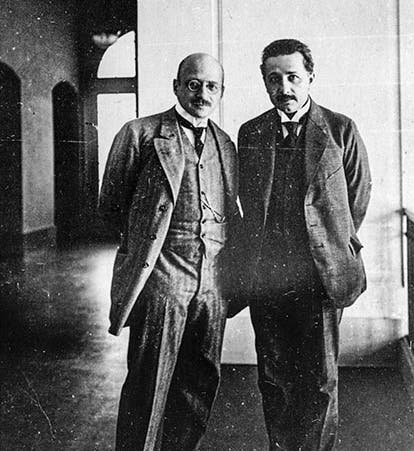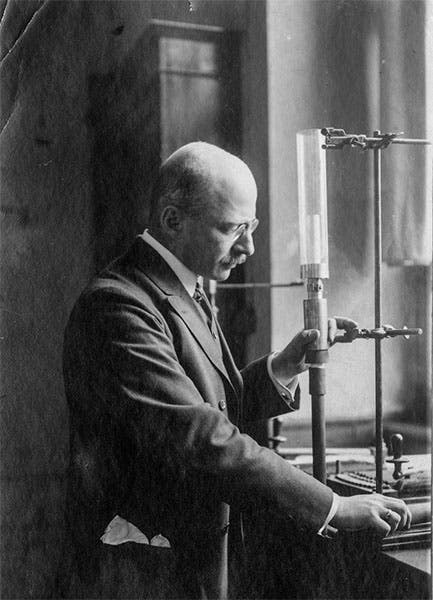Scientist of the Day - Fritz Haber
Fritz Haber, a German Jewish chemist, was born Dec. 9, 1868. Haber developed the first commercially successful method for making ammonia from atmospheric nitrogen. Fixed nitrogen, in the form of sodium and potassium nitrate, is a necessary ingredient in both fertilizers and explosives, but it is very difficult to break the chemical bonds in atmospheric nitrogen to allow it to bond to hydrogen and oxygen. So the world depended on natural sources for nitrates, and Chile had a stranglehold on this market. Haber discovered, around 1909, that under conditions of great pressure, atmospheric nitrogen passed over an iron catalyst could be broken down and combined with hydrogen to make ammonia, which could then be used to produce nitrates. It was one of the great discoveries of the century, like making bread from air, as some put it. He collaborated with Carl Bosch of the BASF firm to scale up the process, and by 1913, the Haber-Bosch process was being used for factory-scale production of ammonia, and poor Chile saw its economy, so dependent on the export of saltpeter, nearly collapse. It is thought that without the Haber process, Germany could never have waged World War I, since the West controlled the nitrate market, and without its Haber-process nitrates, Germany would have been unable to produce fertilizer for its crops, or to manufacture explosives. Haber received the Nobel prize in chemistry in 1918 for his discovery. There are several photos of Haber with Albert Einstein, one showing just the two of them (first image), and another (third image) that includes Otto Hahn and Lise Meitner, who would much later split the atom; they are at the far right, just below the head-shaven Haber. Also included, front row center, is James Franck.
Unfortunately, by the time he received his award, Haber’s reputation in the Western world had been sullied by his role in the development of chemical weapons in World War I. Haber was in charge of the German chemical warfare effort, and he was responsible for the first deployment of deadly chlorine gas in the Battle of Ypres in 1915. Haber maintained that killing with gas is no worse than killing with guns, and he may have had a point, but few agreed with him. Certainly not his wife, who was deeply opposed to Haber's involvement in developing poison gas, and who committed suicide soon after the Battle of Ypres, and certainly not the English physicist Ernest Rutherford, who refused to shake Haber’s hand, the one time they met.
Haber was undaunted at the universal rejection of his belief that chemical warfare was no less humane than conventional warfare, and he continued to work on chemical weapons in the 1920s, developing industrial processes to make mustard gas and hydrogen cyanide on a large scale. It is tragically ironic that many of his Jewish relatives later died in Hitler’s extermination camps, killed by the very gases that Haber helped develop. Haber himself lost his position in 1933, when Hitler banned all Jews from government service, and he planned to move to what would become Israel, but he died on the way there, in Switzerland in 1934, of a heart problem. Haber is one of the great enigmas of science, a brilliant man of great conviction and ability, who was comfortable in a moral position that most of his contemporaries found abhorrent. Roald Hoffman, fellow chemist and fellow Noble laureate, wrote a powerful poem called “Intermediary,” about catalysts, both chemical and human, that focused on Haber's life choices; you can find it in his and Vivian Torrence's wonderful introduction to the art of chemistry, Chemistry Imagined (1993), p. 92. The collage that Ms. Torrence constructed to accompany “Intermediary” can be seen here; the poem does not seem to be available online.
Dr. William B. Ashworth, Jr., Consultant for the History of Science, Linda Hall Library and Associate Professor emeritus, Department of History, University of Missouri-Kansas City. Comments or corrections are welcome; please direct to ashworthw@umkc.edu.








